Campanula topaliana ssp. delphica in cultivation in Lancashire, UK.
(Edited re. spelling of species name. :))
Comments
Re: Campanula species - various.
I had it bloom and die twice and once it survived to bloom again. Alas, that one died after the 2nd year of bloom, but it self seeded for about 4 or 5 years, and I was careless with the seed, so I'm without that beautiful plant this summer.
Re: Campanula species - various.
Campanula hawkinsiana, from seed last year... despite its specialized habitat in the wilds of Greece (serpentinite substrates), it doesn't seem fussy here, and seems to grow equally well in tufa as in relatively neutral pH (as close to neutral as it gets here, likely still somewhat alkaline):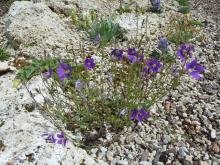

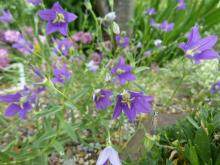
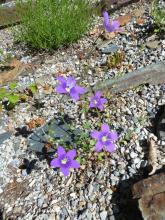
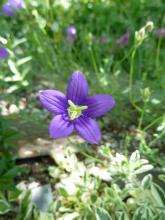
Re: Campanula species - various.
Nice photos, Lori! Love the rotundifolia variations.
Re: Campanula species - various.
Here's a wonderful annual Campanula that we saw last May south of Lake Van in eastern Turkey - would sure like to get seeds of it!
Alice Nicolson
Arlington VA Z7
MMcD edit: Campanula reuteriana, name added in the body of the text so that it is searchable, awesome Campanula Alice!
Re: Campanula species - various.
Wow, that's a beauty, Alice! Thanks for posting it! I'm sure we'll all be on the lookout for seeds now. :)
Re: Campanula species - various.
That one certainly is an eye-catching stunner!
Re: Campanula species - various.
Campanula carpatica ex. 'Blue Clips'... available at any garden center and well worth having for its summer display!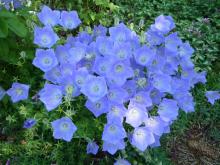
Edit: As these plants are many generations removed from the original, purchased (presumed) clone, I suppose it is more accurate to refer to them as "ex. 'Blue Clips'.
Re: Campanula species - various.
Campanula carpatica 'Blue Clips'... available at any garden center and well worth having for its summer display!
[attachthumb=1]
Its a beauty Lori. Is is 'Blue Clips' or 'Blue Chips'? Instinct and memory tell me it is 'Blue Chips' originally, and maybe via garbled transliteration of a worn label it has become 'Blue Clips'. Another mystery... ;)
Re: Campanula species - various.
Good question, Mark! My recollection is, strangely, the opposite... I knew it first as 'Blue Clips' (and also 'White Clips') but later noticed references also to '___ Chips'... ??
Edit: I suppose "Blue Chip" would make some sense as a catchy name (e.g. "blue chip stock"), but the plural? On the other hand, what would "Blue Clip(s)" refer to, anyway? ???
Another edit: Having said that though, 'Blue Clips' and 'White Clips' seem to be the original names, as bestowed by Benary, according to Lewis and Lynch in Campanulas: A Gardener's Guide. Graham Nicholls in Dwarf Campanulas also refers to 'Clips' rather than 'Chips'.
Re: Campanula species - various.
Yes, Graham Nichols book Dwarf Campanulas has two mentions of C. carpatica 'Blue Clips', no mention of 'Blue Chips', so I suppose that is the right one. Both names are used on the web, memory didn't serve me, but then again, I tend towards dyslexia ;)
Re: Campanula species - various.
I've seen no evidence of that, Mark! :)
Re: Campanula species - various.
Benary's nursery still exists in Germany and they currently list three Campanulas with "Clips®" in the name. These are
Campanula carpatica 'Clips® Blau', 'Clips® Tiefblau' and 'Clips® Weiss' [Blue, Deep Blue, and White]
They introduce quite a number of plants each year but these campanulas are pretty old ones now (or at least I seem to have been seeing the name for a good long time.)
Re: Campanula species - various.
Thanks for that confirmation, Malcolm.
Re: Campanula species - various.
Here's one that started blooming today... Campanula thyrsoides, far from its native habitat in European subalpine meadows. It's one of the few Campanula with "yellow" flowers... well, sort of yellowish, at least. ;)
This article (http://www.botany.unibe.ch/planteco/abstr_repr/PerspPlantEcolEvolSyst_9_...) states that the species may take up to 8 years to bloom in the wild. Fortunately, its cycle seems to be much accelerated in the garden! It is monocarpic, though. (And, on that note, to think that I was concerned at one time that the last of the seed-raised batch had finally bloomed and I'd no longer have it... actually, it turns out I've got about a dozen of them scattered about. This is one monocarp/biennial that seems to want to hang around!)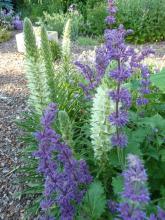
Re: Campanula species - various.
Lori - I too have Campanula thyrsoides flowering for the first time - at least what is left of it. Rabbits ravaged the leaves early on and the poor plant is somewhat distorted but the blooms are there nevertheless. Even if it is monocarpic, is there a possibility that it will produce viable seeds? - must be, since I got seeds from the NARGs seedex a few years ago. Saw it growing a few years back at the Montreal Botanic Garden - really nice. Terribly dry and hot here and most plants suffering. However, Ipomopsis rubra is doing magnificently despite it. Must make sure they are placed where they can be seen by passers by on the street. Not hard to spot as they are very tall and very red. Fran
Frances Howey
London, Ontario, Canada
Zone 5b
Re: Campanula species - various.
Fran, my plants have produced loads of viable seeds. (Having said that, it's getting monocarps/biennials to be self-sustaining in my yard that I often have problems with - maybe due to the mulch - not a problem with this one though.)
Re: Campanula species - various.
Campanula thyrsoides is nice. We have it in the Aroboretum rock garden, too, although it doesn't seem to like it very much. When I grew it, I was afraid it was going to have TOO many seeds. One spike must produce millions! It scared me a little, so I used them for a flower bouquet for Mom.
Lori, what is that blue/purple companion in the photo? It sure makes a splashing combination with the campanula.
Re: Campanula species - various.
It's Salvia verticillata 'Purple Rain'.
Re: Campanula species - various.
Campanulas are among my favorites too! However I tend to like those that I can grow "wild". Here is C. glomerata growing "wild" at our summerhouse. I once collected a rhizome at the roadverge. Now it covers several square meters ;D
Re: Campanula species - various.
A self-sown C. xcarpatica (I assume), softening the edges of the Opuntia trough... I suspect some hanky-panky between my C. carpatica ex. 'Blue Clips' and C. xcarpatica 'Samantha' (second photo), in creating that more open-faced flower...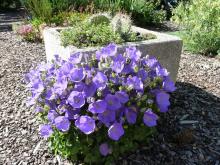

Symphyandra hofmannii.... now Campanula hofmannii, apparently.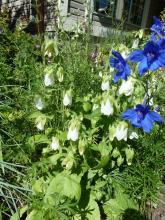
Re: Campanula species - various.
I thought Samantha was an annual?
Is the suspect hybrid perennial?
One of our Chapter members has a dead ringer for Campanula wanneri, but it is totally perennial for 5 years so far. So we suspect it might be a hybrid too.
Re: Campanula species - various.
No, 'Samantha' is a perennial. This patent (not for 'Samantha', but for the similar 'Royal Wave') claims that 'Samantha' is a hybrid of Campanula 'Pseudoraineri' (itself a hybrid of C. raineri and C. carpatica) and C. carpatica. It also claims that 'Samantha' is a sterile hybrid... I find it hard to believe any Campanula might be sterile!
http://www.patentstorm.us/applications/20050283876/description.html
Yes, the plant by the trough is perennial too.
C. persicifolia "Moerheimii':
Re: Campanula species - various.
One of our Chapter members has a dead ringer for Campanula wanneri, but it is totally perennial for 5 years so far. So we suspect it might be a hybrid too.
Interesting... could you show a photo of it?
Campanula barbata is most often a biennial but the plants I have are in their 6th year now. Edit: Correction - 5th year.
Re: Campanula species - various.
One of our Chapter members has a dead ringer for Campanula wanneri, but it is totally perennial for 5 years so far. So we suspect it might be a hybrid too.
Interesting... could you show a photo of it?
This was a few years ago that I saw it, but I knew I photographed it and here it is. Okay, not exactly a dead ringer as I remember. As you say, interesting nonetheless. Any thoughts?
Re: Campanula species - various.
I'm not extremely familiar with C. wanneri, but just from photos, it sure looks just like it. Were there some other details (besides the longevity) that made it seem to be a possible hybrid? Does the owner of the plant send seeds to the seedex? I'm always curious if these individuals that act differently than most of their tribe pass on traits like that.
Re: Campanula species - various.
Hi....just back from a nearby hike and happened upon this sweet little Campanula. The flower is really more blue than the photo represents. It was growing in a pretty dry woodland up about 500'. The stem is about 12-14" long and it was a bit sprawling. The foliage is very narrow and about 2-3" long.
I tries finding an ID but the closest I came was C. aparinoides, the marsh bluebell. This was definitley not growing in moist soil.
So any help with an ID would be greatly appreciated! Thanks! :D
Re: Campanula species - various.
I'm not familiar with C. aparinoides but here is some more detailed info on it; it seems the inconspicuously toothed leaves may be significant:
http://www.minnesotawildflowers.info/flower/marsh-bellflower
When I zoom in on the photo, I can't make out any toothing on the leaves (not to say it may not be there).
Have you ruled out C. rotundifolia? The linear upper leaves (only the basal ones are rounded at all) and general flower characteristics, along with the habitat, appear to be a reasonable fit.
Campanula trogerae x betulifolia, with both pink and white flowers: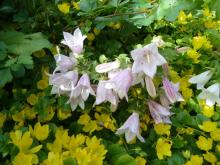
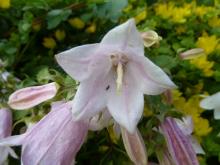
Re: Campanula species - various.
I'm not extremely familiar with C. wanneri, but just from photos, it sure looks just like it. Were there some other details (besides the longevity) that made it seem to be a possible hybrid? Does the owner of the plant send seeds to the seedex?
The flowers tend more toward outfacing, and the inflorescense structure is not blatantly pronounced. (While unmistakable in the biennial, it's almost hidden in this one.) No expert here, either, but it makes for good conversation...
Some pics of C. wanneri I have grown:
Ev donates seed to the NARGS seed ex every year, but I don't think she's ever sent this one. I checked the last two years, at least, and she hasn't.
Re: Campanula species - various.
Campanula xtymsonii, apparently a hybrid of an odd couple, C. carpatica and C. pyramidalis, though considered by some to be just a form of C. carpatica (ref.: Nicholls: Dwarf Campanulas):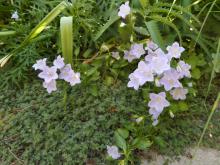
Campanula cochlearifolia 'Elizabeth Oliver' with its double flowers:
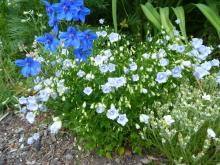
Re: Campanula species - various.
I wonder if Elizabeth Oliver is the one I see from time to time sold as a "temporary" flowering plant like a poinsettia or kalanchoe? It sure looks like it.
What is that deeply toothed lance leaf (or leaflet) plant behind the Campanula xtymsonii?
Re: Campanula species - various.
Hi, Rick! It's Sanguisorba tenuifolia 'Pink Elephant' (assuming I'm keying in on the right one).
Oh, that rang a bell... I think I recall hearing of Campanula 'Haylodgensis' being sold that way, to the extent that people seem not to even realize it's a hardy perennial. I wonder if that's it?
Re: Campanula species - various.
Yes Lori, that would be it, a sanguisorba. I could have thought of it, but no... :D
----- thanks (about your ID suggestion for the campanula, too)
Re: Campanula species - various.
A few campanulas looking good now as summer gets into its stride. Campanula garganica 'Dickson's Gold' is one of those plants that just glows, a perfect combination of foliage and flower; 'Timsbury Perfection' is a seedling raised by Graham Nicholls, whose knowledge of campanulas is unrivalled, from a form of rotundifolia - my picture does it less than justice but it is a delicate and rather refined plant with neat foliage; and 'Covadonga', one of the most richly coloured of all campanulas, collected in Spain by Clarence Elliott over 70 years ago but rarely cultivated in recent times. Again it has that beautiful airy neatness about it - definitely a plant to propagate up.
Re: Campanula species - various.
Tim, when I see your beautiful bellflowers I realise I have planted too few of them! I have to mend that ;)
Re: Campanula species - various.
Hi Campanula Folks:
I'm pretty new here, but have finally gotten the knack of reducing the size of pictures for uploading. So, I have a very low-growing campanula (I assume) that I love, but don't know the name of. Can anyone help me?
It's no more than 4cm high, hairy and going out of bloom now, if that's any help.
Thanks, Lola .... in hot, hot Brooklyn
Re: Campanula species - various.
Looks like Campanula sartorii to me, but others might have a different opinion.
Have a look at this pic.
Re: Campanula species - various.
Welcome to the forum, Lola!
I don't know that much about campanulas, but if Michael grows it, it must be good!
Such a cute little thing. I imagine the bloom period is cut short by all this heat. Does it normally have a long blooming time?
Re: Campanula species - various.
Thank you, Michael, for your I.D. which, right or wrong, is the one I will use until a better one shows itself. And in answer to Rick, its bloom time is average, I think. Whereas my growing patch of Houstonia caerulea is very long blooming, starting way before the campanula and still going... slightly.
Re: Campanula species - various.
;D ;D ;D
Re: Campanula species - various.
Providing a bit of colour in the warm dry conditions of the last few days ...Campanula carpatica.
Cheers Dave.
Re: Campanula species - various.
Such an enticing shade of medium light blue, a Campanula species no garden should be without, a fine portrait.
Re: Campanula species - various.
Nice one, Dave! Great to have those southern plants and gardens to look at this time of year :) Dry I can sort of relate to (lots of water coming down from the sky here, but at these temps, it is dry!) but warm -outdoors at least- is a vague memory ;)
Re: Campanula species - various.
I'm looking at the sky, it has exactly the same blue shades as your "bluebell", Dave!

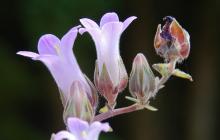

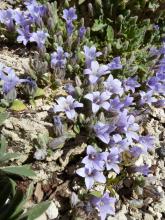
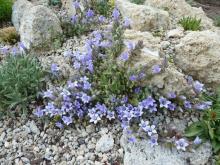
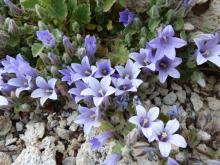
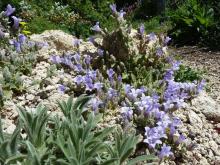
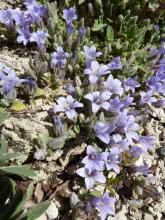
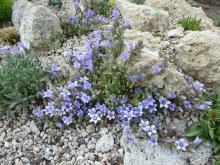
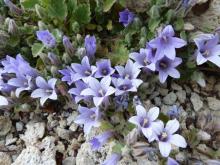
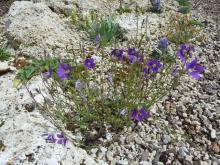
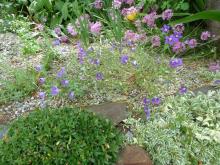
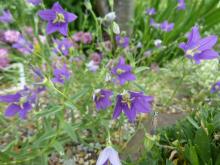
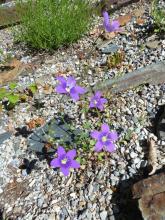
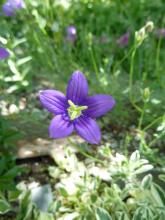
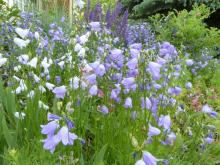
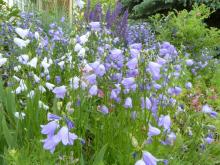
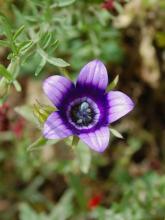

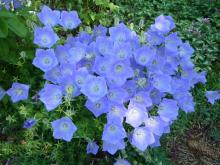
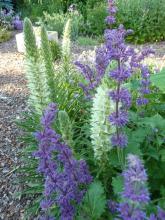
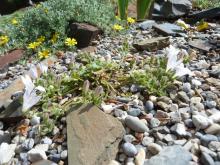
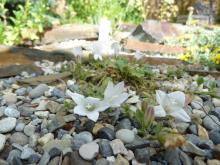
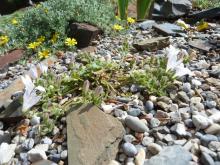
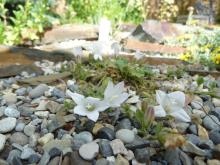
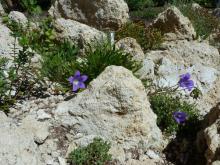
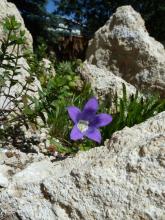
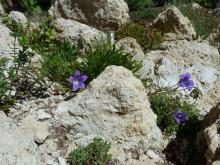
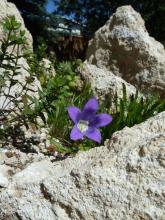
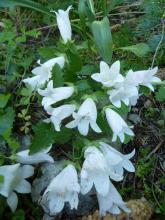
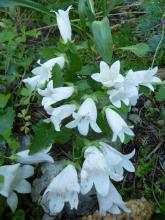
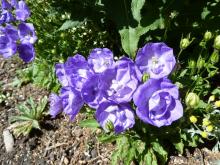
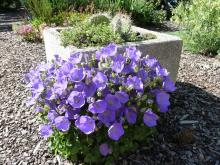
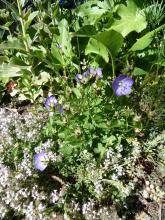
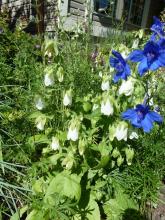
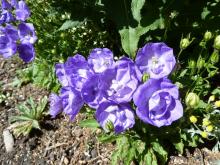
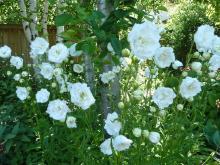
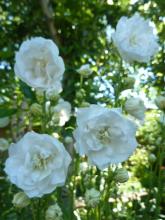
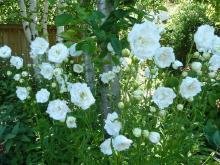
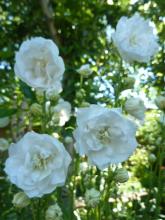
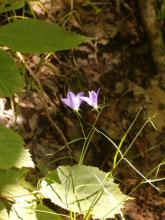
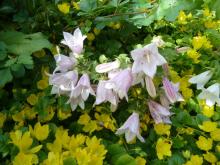
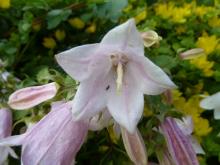
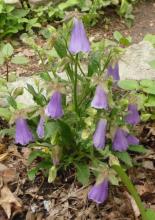
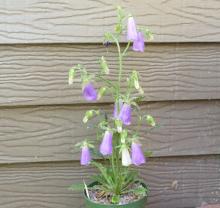
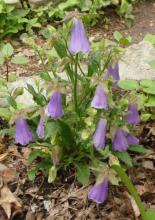
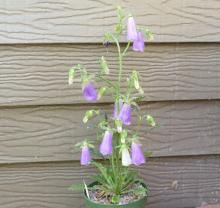
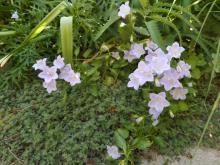
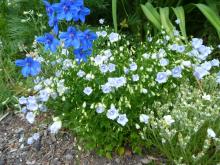
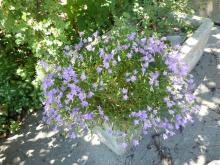
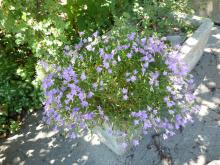
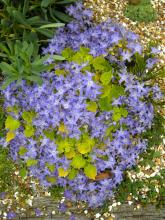
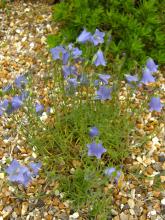
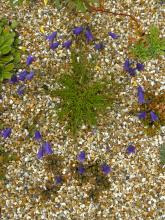
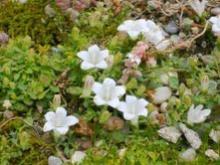
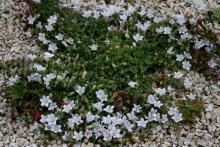
Beautiful photo, Cliff. The subsp. is from Delphi, Greece (nice to see that some plant names make sense :)), according to Nicholls.
I'm impatiently awaiting the flowering of some C. topaliana I grew last year, and your photo makes me that much more eager! Nicholls says the species is monocarpic or a short-lived perennial. Has that been your experience?
Does anyone from colder zones have experience with it re. its longevity?